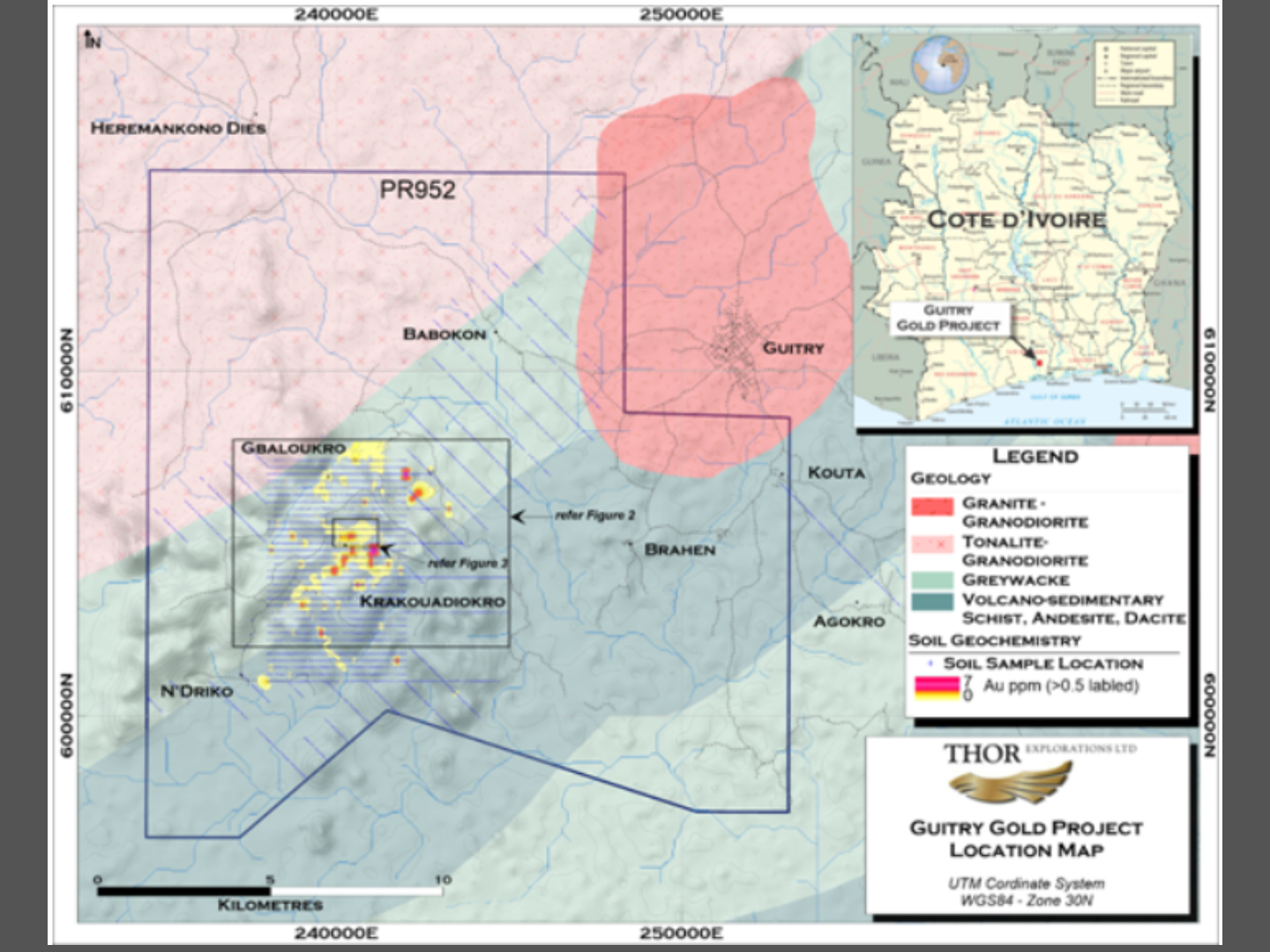Thor Explorations completed a 3,000-metre reverse circulation drilling campaign at its wholly owned Guitry Gold Project in Côte d’Ivoire, with initial assays confirming multiple high-grade gold intercepts. The May–June 2025 programme tested a new interpretation of gold mineralisation controls, building on prior work by Endeavour Mining.
The maiden campaign targeted the Krakouadiokro Prospect, with early assay results confirming multiple high-grade intercepts. Highlights include:
- 10 metres at 10.36 grams per tonne (g/t) gold from 57 metres (GURC25-214)
- 5 metres at 12.65 g/t gold from 69 metres (GURC25-228)
- 3 metres at 14.50 g/t gold from 82 metres (GURC25-219)
- 17 metres at 2.16 g/t gold from surface (GURC25-229)
- 7 metres at 7.71 g/t gold from 77 metres (GURC25-227)
Other significant intercepts included mineralisation near surface and at depth, with several holes confirming the existence of steeply dipping lodes and deeper bedrock mineralisation.
Thor President and CEO Segun Lawson said the results confirm the company’s new interpretation of the orientation of the mineralised lodes, which remain open. He added that drilling successfully intersected previously untested deeper bedrock mineralisation, which also remains open at depth, and that the company continues to target its maiden resource at Guitry by the end of the year.
ALSO READ:
Thor Explorations continues to have a productive 2025
Project overview and geological setting
Thor acquired the Guitry Project from Endeavour Mining in 2024 for US$100,000 in cash and a 2% net smelter royalty. The project lies 220 kilometres west of Abidjan and covers 295 square kilometres along the Tehini Greenstone Belt, which extends into Burkina Faso and hosts large gold deposits such as Houndé and Mana.

Early exploration by Endeavour included over 11,000 metres of drilling and 7,672 soil samples, which defined two key prospects: Krakouadiokro and Gbaloukro. Soil sampling revealed an 8.5-kilometre-long gold anomaly, with a 5-kilometre continuous zone at Krakouadiokro. However, previous work provided limited insight into the geometry and extent of the primary gold zones.
Most historical drilling intersected flat-lying, near-surface mineralisation. In contrast, Thor’s campaign focused on testing deeper, steeply dipping lodes based on a revised interpretation. Drill holes were oriented to cut across the north-east striking sedimentary sequence, which includes greywacke and schist overlain by a laterite cap.
High grades were intersected over a 400 by 300 metre area, particularly in the fresh rock zone, with mineralised lodes averaging true thicknesses of around 9 metres.
Thor mentioned that it will continue with infill and step-out drilling at Krakouadiokro to define a resource, while also testing untested or partially tested geochemical anomalies at both Krakouadiokro and Gbaloukro. The company also plans to expand geochemical surveys along 10 kilometres of underexplored strike.
Drilling is expected to resume after the rainy season, with additional work planned at the company’s Marahui Project.


